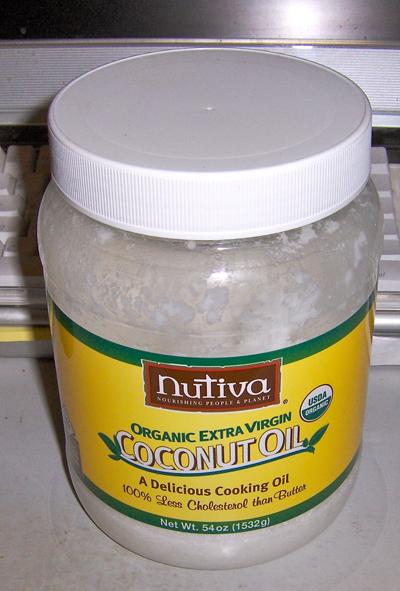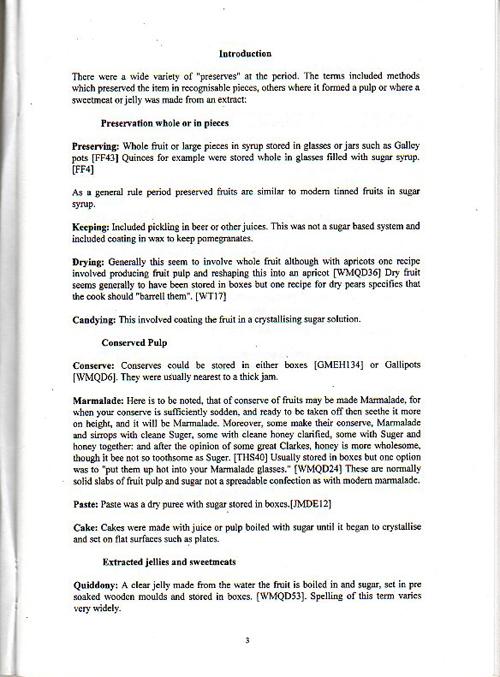-
Posts
11,033 -
Joined
-
Last visited
Content Type
Profiles
Forums
Store
Help Articles
Everything posted by andiesenji
-
They are eaten as a snack and you probably didn't use brine, which leaches the alkaloids out easier than plain water. One week in plain works ONLY if they are in running water so the alkaloids can be carried away. The Italian lady who told me about lupini beans many years ago, explained that in the village in which she grew up, her father owned a mill and the village women would bring netted bags of lupini to hang in the mill race for a week or so. After that they were soaked in several changes of brine, until the brine no longer had a bitter taste. The alkaloids are not only bitter, they are toxic. You can buy processed lupini in jars, pickled. Safer and far easier. While I like to full around with this type of thing, one time was enough for me and it was many years ago and I don't care to repeat the process. I think altogether I spent three weeks on it.
-
GE made two versions of the "Triple Whip" mixer. This one in the 1930s and early '40s and in the 50s one with a horizontal motor If you click here and scroll 2/3 down the page you will see two in the inverted position so they could accept a juicer and other attachments.
-
You are so right! I missed that one - it's similar to the pork chop gravy. By "milk" gravy I meant any of the dairy gravies, milk, cream, etc. Our milk was from Jersey cows and was more like today's half & half than regular milk. The first time I ever saw a bare "cube" steak I thought it was going to be treated like chicken-fried steak and was shocked when it was fried plain, with no coating and no gravy. UGH! I also forgot to mention buttermilk gravy - I think it is a western KY regional thing - little sausage meatballs browned and simmered in this gravy which was served with dumplings or on split biscuits. Years later when I was first served "Swedish Meatballs" I realized it was very similar to that food I had loved in childhood.
-
And in addition to all of that, it would mean having more deep-fat fried food at home. One of the factors in the calculus is limits of consumption. Some things I only have once in a while because I only have them when I am out. Other things I only have once in a while because I make them myself and it is too much work/expense to do more than once in a while. I think, hey, if I had my own fryolator, I could have fried clams whenever I want! Which would be all the time. I join you in this thinking. Me too, me TOO! I was given one of the new T-Fal low fat fryers for Christmas and immediately gave it to someone who will really use it. I've spent two years steadily losing weight and do not want to backslide. As much as I love fried foods, I know having this appliance would have put a serious crimp in my routine.
-

New products from Rancho Gordo (banana vinegar and more)
andiesenji replied to a topic in Kitchen Consumer
I had some jaggery and have used that and it works great and has that particular flavor that I associate with "burnt" sugar. -
Wild yeasts can vary widely in activity and not always are "wild" per se. Until about fifteen years ago, or so, there was a small brewery two miles west of my home and as we have almost constant westerly winds, the movement was from the brewery toward my home and I could often smell it. My kitchen windows are often open and the screens are certainly not proof against yeasts. I had been maintaining a particular sourdough culture for a few years with regular feedings and a very dependable behavior. Sometime during a period of the culture being refreshed and sitting out on the counter under the window, there was apparently an invasion of some yeasts that I suspect originated in the brewery. The activity increased exponentially. I was away from the kitchen for three hours and when I returned the stuff had filled the 6 quart Cambro container, climbed out and was exploring the counter and down the front of the cabinets. It actually looked like someone had sprayed expanding foam onto the counter. I had never before had this happen and thought it was a mistake on my part - maybe I had added too much flour or something. I disposed of all up two cups, added an equal amount of flour and water and put it in the fridge in the cleaned Cambro container. Even in the fridge it grew to the point that it pushed the lid off the container. I made bread with it and it was excellent but had an intense beery aroma. I was able to maintain it for about six months and then it died when I neglected it for too long. Repeated trials never achieved the same effects, it was a one-off experience. Then the brewery closed.
-
Blether, in the south "milk" gravy goes with pork, sausage, chops and etc., and with chicken - "smothered" pork chops are usually topped with milk gravy, at least in western Kentucky, where I grew up. Many southern diners, cafes, etc., serve biscuits and milk gravy, with or without sausage. Ham and pork roasts, are usually served with 'red-eye' gravy made with black coffee, no milk. Beef and game is served with brown gravy, some contain a dash of vinegar and there is also turkey gravy - goose and turkey or duck - brown and silky, no milk and different than regular "brown" gravy. And there there is the "black pepper gravy" served with game - especially venison but also with wild pig, raccoon and etc. Raccoon is an extremely fatty meat. In my opinion, the south has more versions of gravy than any other region/country.
-
This subject has been studied exhaustively by individuals,such as Ed Wood, by Universities, and there have been any number of doctoral theses published with this data, if one cares to look. And it's not just the wild yeasts but the lactic acid bacteria that ride along with them that produce the flavors. These studies have been done with sterilized flours - different types to see if different organisms prefer different kinds of grain - and which were the most active, in widely separated areas. There are starters that prefer multi-milled regular flour, whole wheat and some that are very active with rye and less active with plain wheat so these wild "animals" can be very selective in their tastes. There are some that are highly active with corn and other grains. Googling "Studies on wild, regional yeasts for sourdough bread" gives 59,400 primary results. How Stuff Works provides this bit. I have both ofEd Wood's books and have purchased several of the sourdough starters he offers. I live in the desert where the concentration of yeasts is somewhat lower and it takes longer to "catch" enough to develop a good culture. In areas where the humidity is higher (San Francisco and the bay area, for instance) the concentration of the desirable wild yeasts is higher and a culture will develop more rapidly. If you purchase a sourdough culture from someplace such as South Africa, it will produce a true sourdough for a few months but will eventually be taken over by the "native" yeasts in your area. I am pretty sure that my sourdough does not develop from the yeasts found in the flour because I routinely "toast" the flour prior to using it in baking because I like the flavor of breads made this way. Here's another sourdough site. There are yeasts in flours, however they are not the primary yeasts of the region where the dough is prepared and are rarely strong enough to overcome the native yeasts - that is why purchased cultures revert to the local after some months. In my opinion, and I am not an expert, some people come up with an idea and run with it without doing any real research and certainly little if any delving into the published data by scientists who actually know what they are doing and keep meticulous records.
-
I pour the coconut milk into my "cat glass" fat separator and heat it in the microwave - the time can vary considerably, sometime the stuff will boil vigorously after 2 minutes on high, sometimes it takes 4 or 5 minutes and I have no explanation for this phenomena. I just leave it in the mwave to cool and the thicker stuff will float to the top and I can pour the thinner stuff out through the spout from the bottom. The Philippine market sells a separator for coconut milk that is just like one of the plastic fat separators that has a spout in the center of the bottom that opens and closes and is similar to THIS ONE but is not made by Amco. I use a lot of coconut oil and have written about it in other threads. I use only the organic, virgin coconut oil and my favorite brand is I go through one of these 54 ounce tubs in three months. I buy it from Amazon via the "Subscribe and Save" program.
-
I often prepare a strata with brioche sliced very thin, layered with tomatoes, bacon(pre-cookedCanadian, if I don't have meaty bacon on hand), sliced or chopped artichoke hearts and after the eggy custard has been added and the dish baked - in a 9 x 13" or similar sized and shaped baking dish - I top it with sliced avocados and pipe on a mixture of half sour cream and half mayonnaise in attractive squiggles. I use the recipes on this page as a guide for amounts, varying for the number of people I am serving. I often use the Corning French White casserole that holds almost twice as much as the 9 x 11 baking dishes. I've served these for breakfast, brunch, lunch, afternoon tea and for dinner or a late supper. Very versatile and everyone seems to love it.
-
Exactly my opinion, or make a batch and divide it and freeze some. I have owned and given away several bread machines. Several to single folks who don't need a large loaf of bread. I show them how to use the dough cycle, take the dough, at the end of the cycle, divide it in half, freeze one half and bake the other half in a small loaf pan. There are many different sizes of loaf pans, some "mini" and some that produce a half-length loaf. I don't want bread with all the mysterious additives and preservatives. I'm picky! I make my own sour cream, cream cheese and butter - I've been doing it for many years and for me it's easy and I don't have to think about it. And I make mozz - it's so easy using the method widely shown online by Ricki the cheese "queen" and I've never found ricotta to be tough. Again, I want something that has no additives, no preservatives and to me it tastes much better. To me, knowing what is in what I'm eating is important. I'm diabetic and I don't want to eat things that have "hidden" sugars and calories that I can't control.
-
I have no idea what you could possibly be doing wrong. I make nut butters in the VitaMix, in the food processor and lately in the Thermomix and used to make them with a manual food grinder and never had a problem. I roast most nuts a bit to develop more flavor and I add salt, never sugar as most are sweet enough on their own. The mixture should blend to a smooth consistency with the addition of only a little oil - for almond I use sweet almond oil but for others use any bland oil - lately have been using the rice bran oil but have also used avocado oil to good effect. If it does not have enough flavor, try cooking it very gently in a skillet over a very low burner. This works very well with nuts that have a blander flavor - hazelnuts especially. If the nuts have been stored for an extended period, try soaking them overnight and then spreading them on a sheet pan and drying them in a very low oven until quite dry, then turn up the heat and roast them for 10-15 minutes and then process them. Don't give up, keep trying, I'm sure you will have success.
-

What did You Learn (To Cook) From Your Parents?
andiesenji replied to a topic in Food Traditions & Culture
From my parents, nothing. From my grandparents, their cook and my great grandmother, various aunts and great aunts, everything. I grew up at a time when there was no argument about what was consumed. If it was on my plate, I ate it and thus learned an appreciation of foods that had I been born a decade later, would never have tasted. -
Don't be afraid to buy the larger cans. The stuff is shelf-stable for years! They say so on their website and in my experience this is certainly true.
-
Especially in the south, cooks used lard instead of butter in cakes, cookies, breads and so on. In England there are several traditional cakes that use lard instead of butter. The Wiltshire "Lardy Cake" is probably the best knows. There are many recipes on the 'net but I have tried this one and found it to be superior to the others I have tried. I also have a similar recipe, that also includes saffron, in one of my older cookbooks from England, but I can't put my hands on it right now. It might be in storage as I don't have bookcase room for all my cookbooks so rotate them from time to time. Here's another mention of lardy cake &etc I make a spice cake with lard - the lard and sugars (both white and brown) are creamed and beaten until very light and fluffy then combined with the eggs and spices - then this mixture is chilled a bit before adding the flour. I'll type it up and post it later - I don't know if it is due to the chilling but this cake gets a lot of rise and is quite light and moist. It's not heavy as so many spice cakes are.
-
Chris, Saco Foods used to have a little free booklet that you could send for with the many uses of the dry buttermilk blend. The top of the can, under the plastic cover had a little fold-out paper with a coupon and a label to send for the booklet. Now all of those recipes, plus many more - more than 350 - are on their website. I have pulled up "Chicken" under the Main Courses category. Just select whatever category you want and scan through the recipes listed. From experience I can assure you that the recipe for Easy-Bake Chicken is excellent.
-
Discount Juicers has a comparison chart that is fairly informative I've owned several juicers - I had a commercial Champion years ago and it was such a bi**h to clean that I rarely used it. I bought another commercial juicer, I think it was a Kempo, it was twice the price of the Champion but I wasn't too happy with it and returned it - It did have a long warranty, but it was slow and again was messy to clean. I can't remember which others I had. One was a complete bust - the others were merely adequate. I think I even bought one of the "Juiceman" QVC offerings. Gave it away. None did as good a job as simply liquifying the stuff in my VitaMix and straining it, until I got the Juice Fountain. It's easy to use and easy to clean and I use it two or three times a week, sometimes daily - in the summer when my garden is producing well.
-
Check this blog by Helene she has 49 videos of the TM31 in action. Here's a series of photos showing how to make butter in the TM31
-
The local TV news stations devoted significant segments to today's opening of Larry King's Brooklyn Water Bagel Shop. It's actually in Beverly Hills Larry was on hand with his wife and even slid a tray full of bagels into the boiling water. Note in the article the prediction of 100 locations in just the L.A. area in the next 6 1/2 years! I wonder what the proprietors of the Brooklyn Bagel Bakery (est. 1953) in downtown L.A., think of this "invasion." The founders of this bagel bakery were patients of the internist for whom I worked from 1959 to 1967 and used to bring grocery bags full of the "real" bagels at every visit. They are on Beverly Blvd. near Alvarado.
-
I have the Columela and it is quite good. I also have Pommery, which I like and I tried the Don Bruno but to me it is somewhat harsh - although I "fixed" it by adding some cream sherry to the vinegar that cut the harsh notes and made it more palatable for me. In the past I had a small bottle of a "double solera" that was very sweet and more like the long-aged balsamics - almost a syrup. It was this one. I think I consumed most of it on fruit and on ice cream!
-

Does tea taste better when fresh-brewed like coffee does?
andiesenji replied to a topic in Coffee & Tea
Answer to No. 1. Is Yes, it tastes better immediately after brewing. Even if you decant it into another teapot to keep it from "stewing" with the leaves, it begins to degrade, especially if held over heat. I can tell the difference but many people cannot. However, true tea fanciers can easily tell the difference. -

What food-related books are you reading? (2004 - 2015)
andiesenji replied to a topic in Food Media & Arts
I've finally got around to reading through Mma Ramotswe's Cookbook, based on the series by Alexander McCall Smith: The No. 1 Ladies' Detective Agency etc. Cookbook author: Stuart Brown, Foreword by Alexander McCall Smith. It's not just a cookbook, it has vignettes of life in Botswana and some interesting explanations and descriptions of the foods popular in the country. Also Mma Ramotswe's philosophy about food and life in general. The subtitle is "Nourishment for the traditionally built" being a "traditionally built" person myself, I can empathize. -
Do you have these? I got these two facsimile reprints a few years ago from Acanthus Books and have tried some of the recipes with pretty good results. They are shown in the original and with a modern interpretation (makes it a lot easier than trying to decipher the original wording). The total number of pages in the two paperback volumes is 140. However, the print is fairly small and there is a lot of information. Here's pics of the covers, list of contents and the first page of instructions, to give you an idea of what is in them. I have had success with the Quince preserve and with the sugared grapes.
-
One of the Thermomix consultants from Perth, Australia is attending a conference in Dubai and posted about it at ForumThermomix. I'm posting here because she has news that a new Asian cookbook for Thermomix will be available in May. So this is a heads-up to Thermomix fans. Hello from Dubai
-

New products from Rancho Gordo (banana vinegar and more)
andiesenji replied to a topic in Kitchen Consumer
The Philippine market in my town sells a banana vinegar but it is not exactly like this product. The one I have purchased is more like regular vinegar, just a bit sweeter and quite dark in color. In my bookmarks file I have this link for how to make banana vinegar. I've never tried it, although I do make the banana ketchup that is another Philippine product. I don't know how many varieties of vinegar I have on had presently. I have used the coconut, honey, fig and balsamic recently, and cane vinegar. I'm going to order this one though. I like all of RGs product.






